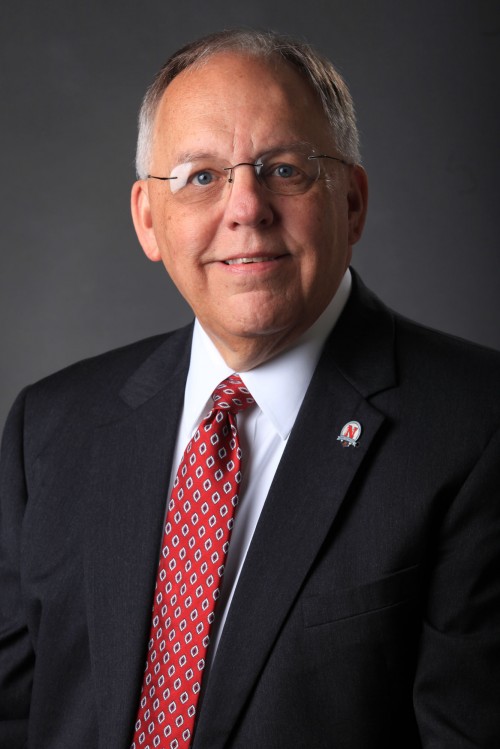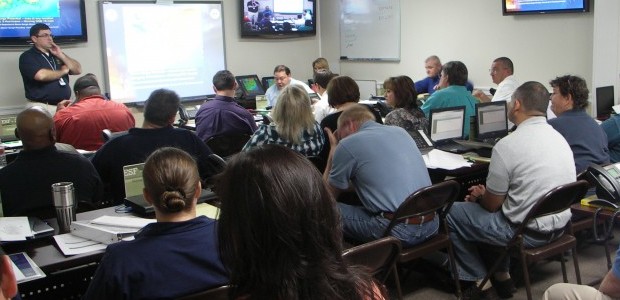
Nicholls funding drops another $4.4M
June 19, 2012Gov.’s play controls complex’s game plan
June 19, 2012There is nothing anyone can do to prevent a hurricane. The best a community can hope for is to be adequately prepared for survival and recovery.
Local officials and the National Weather Service have deemed the Terrebonne Office of Homeland Security and Emergency Preparedness ready for action, following Thursday’s hurricane drill inside the Emergency Operations Center in Houma.
More than 60 participants representing emergency agencies, government offices, utility operations, medical facilities and multiple resources participated in the parish’s first-ever tabletop hurricane drill.
During the exercise, individual parts of a complex system revealed to one another what they were doing during each stage of a natural disaster from the level of storm formation, to its positioning 72 hours before the first tropical winds are felt locally, through evacuation and into public reentry.
Terrebonne Parish Emergency Preparedness Director Earl Eues said the exercise went smoothly, based on documented steps of action, and offered each participant insight into what to expect.
“It went extremely well,” Eues said. “To get everybody in the room and go over their plans with a simulated scenario from the National Weather Service proved to be successful.”
NWS Chief Warning Coordinator Frank Rivette spelled out details of a Category 3 hurricane making landfall on the line of Terrebonne and St. Mary parishes. From there each participant reported specific activities before, during and after the storm.
Making use of PowerPoint, real time and interactive communications equipment, participants worked through the mock-storm, with a few snags thrown in for good measure.
“We went through 19 emergency support functions and asked each [participant] what was being done by each department at each point,” Eues said.
The emergency preparedness director said one significant element presented by the NWS was revealed in storm surge models. It noted how during a Category 3 hurricane, Terrebonne Parish would take on an excess of 12 feet in storm surge water. That would leave Houma with four feet of water above the existing ground level.
“The rotation of a storm [hitting at Terrebonne and St. Mary parishes] is going to constantly be rotating water into Terrebonne Parish,” Eues said. “The problem was that based on the scenario, we would not see any relief from water and tropical storm force winds for around 12 hours with the south wind pushing water up from the hurricane.”
Thursday’s mock storm formed in Mexico’s Bay of Campeche. “This gave us about two-and-a-half fewer days to prepare than a storm coming through the strait of Florida or south of Cuba,” Eues said.
In comparison to Thursday’s mock storm, Hurricane Gustav, which slapped Terrebonne Parish with a direct hit, formed south of Haiti on Aug. 25, 2008, and made landfall as a Category 2 storm at Cocodrie on Sept. 1, 2008.
During Hurricane Gustav, the northeast quadrant, where storm surges are strongest, was in Lafourche Parish. Eues said that Gustav was also a smaller storm by circumference and moved faster than the model that was offered during Thursday’s drill.
“When Hurricane Ike came a week after Gustav and headed toward Texas, we got that south wind and had [an estimated seven feet of] water pushing into Terrebonne Parish,” Eues said. “We got so much water surge from that storm because it was so huge in circumference.”
“I was glad to participate in the local drill,” Rivette said. “It is always good to review the plans on a personal level or with folks in parish government reviewing plans.”
Rivette said discussing all the potential issues as participants acted out their roles helped those involved understand how their jobs impact others.
As a participant, Terrebonne Parish Public Works Director Gregory Bush said he found both rewards and room for improvement.
“It was very beneficial,” Bush said. “It showed how everything is related, with all the different services. For example, someone from utilities was able to hear how the evacuation schedule went. The fire department could hear what public works was doing. Everybody understood what media interface was. More importantly, they saw that everybody has to work together as a team.”
Bush said his level of participation in emergency preparedness involves transit evacuation as well as public works. “We use public transit to collect people from the bayous,” he said. “We take them to H.L. Bourgeois High School [as a gathering center] then use other busses to evacuate them. That is important because public works has to make sure those routes and bridges are open and accessible for the evacuation.
“Likewise,” Bush continued, “we have the same responsibility for getting people back into the parish. So, it is important for people to understand how that correlates.”
Bush said he was impressed with the amount of thought that went into different hours and days leading to a hurricane making landfall, strategies during the hours of impact, and determining what needs to be done for reentry and recovery.
“It was a very extensive list,” Bush said. “It was obvious that there had been a lot of war gaming of what if this or what if that. To me that level of planning is critical. Because if you don’t [plan at a real life level] you are going to forget something when a crisis hits.”
On Friday, participants debriefed within their individual agencies to determine where improved steps might be taken.
“I was impressed [with the drill], but I thought it could have gone further,” Bush said. “I would have liked to exercise some of the employees. For example, if we suddenly lost power someplace, let me deploy generators to a certain location and expand the table-top so the employees with the parish get the same hands-on hurricane thought mode that we were in at the EOC. We could work the scenario up to expand it to the entire parish so everybody can start thinking hurricane. We have been talking hurricanes, but until you pull that orange tube out you are not thinking about it.”
Eues said that immediately following the drill each participant filled out an evaluation form that he will review and take back to assist them and their concerns.
“One of the things we have been doing the last three years is get to a point that if someone says there is a storm coming, they don’t have to be nervous,” Eues said. “I know my departments and agencies are prepared and have plans to move along.”
This is the first year Terrebonne Parish has had an extensive plan in place with assigned roles for specific agencies prior to a storm hitting. “We had the exercise go through as close to a real situation as possible, to simulate where we are going in a real event,” Eues said. He then chuckled and added, “That way when it happens you don’t have any pressure on you.”
Government agencies assemble at the Terrebonne Parish Emergency Command Center to participate in a disaster drill. Each participant reviews what will be done in the event of a hurricane prompting evacuations of Terrebonne Parish this season.









